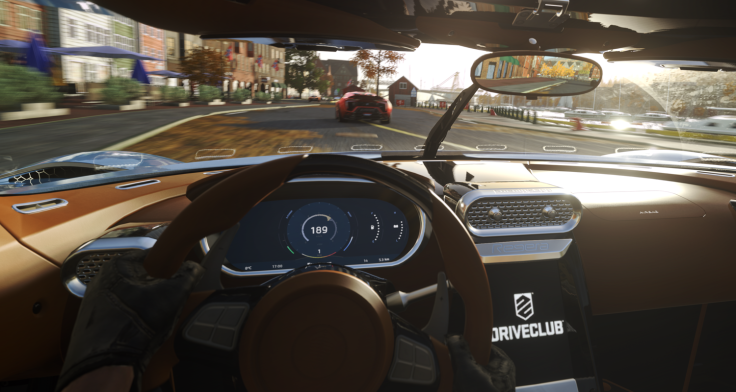Driveclub VR review: Evolution's PS4 racer finds second wind with PSVR
One of the Sony's key PlayStation VR launch titles shows the great potential of VR for racing games.

I've never been a fan of the cockpit view in racing games – it's always seemed to me like the reserve of aficionados and gear-heads. I've always preferred the third-person perspective and the larger field of view it offers, which helps counter how terrible I tend to be at these games. After playing Driveclub VR however, it's safe to say I've been converted.
Driveclub VR makes most sense in the cockpit view (there is a third person view if you wish to use it) and it's because of everything VR offers that it works so well. The one-to-one head movement and tracking makes it feel more natural. The use of rear view and wing mirrors occurs organically because of the uncanny sense of physicality. It just feels right.
It controls like most conventional driving games, making the virtual reality aspect purely about perspective. This means Driveclub VR is one of the most natural and easy-going of PSVR's launch titles, and a great entry point for those who haven't used a quality virtual reality headset before.
The smoothness of the image, presented in 60fps but effectively 'upscaled' to 120fps thanks to asynchronous time-warp (explained here, thankfully), is incredible. Being able to look around the cockpit, lean out the window and crash without feeling nauseous is incredibly valuable in such a high-speed game.
However, this being one of the more processor-intensive PlayStation VR titles, the visuals do suffer considerably versus high-end, non-VR driving games.
This is to be expected of all VR games due to the need to render separate images to each eye, and gives Driveclub VR the appearance of an early PS3 game. Car models and interiors are lovingly recreated, as you'd expect, but in races other cars appear blurry unless you're nose to tail, and sometimes it's hard to tell which way you're supposed to turn on the few corners that aren't well sign-posted (literally, and in the design of the tracks).
The tracks themselves can look a little threadbare if you focus on anything but the road ahead (as with most racing games) but there are some nice wider views that give them life: cruising over a Highland bridge, through snow-capped peaks or between two overhanging blossom trees. The weather effects that took so long to arrive for the original version of the game, but which were warmly received once they did, are also understandably absent.
Likewise the sound design seems to have been stripped back to accommodate 3D audio. The effect sounds more like a collection of sound bites than one audioscape. When you collide with another car or skid around a corner, it sounds as though the same barely-distinguishable sound effects play over and over.
The port brings over a great deal from the 2014 original, with some new tracks to boot. It is certainly one of the more feature-rich VR games available at launch, and also boasts the most depth. Online racing and the ability to create clubs with friends are both present, and there's plenty in the career mode to master too.
Consoles are currently in the midst of a push for computing power above all else with the PS4 Pro and Xbox's Project Scorpio ushering in a new era of 4K gaming. So, the visual downgrade of PSVR will lose the device a lot of fans, especially considering the widespread expectations that racing games are showcases for graphical prowess.
It's understandable that many will find complaint, but the actual experience of virtual reality overwhelmingly compensates for this loss in visual flair.
Virtual reality racing has an enormous amount of potential. Racing games are often visual delights however, so what Driveclub VR lacks in this department is notable despite the sense of presence that makes it so fresh.
PlayStation VR launch game reviews:
For all the latest video game news follow us on Twitter @IBTGamesUK
© Copyright IBTimes 2025. All rights reserved.




















